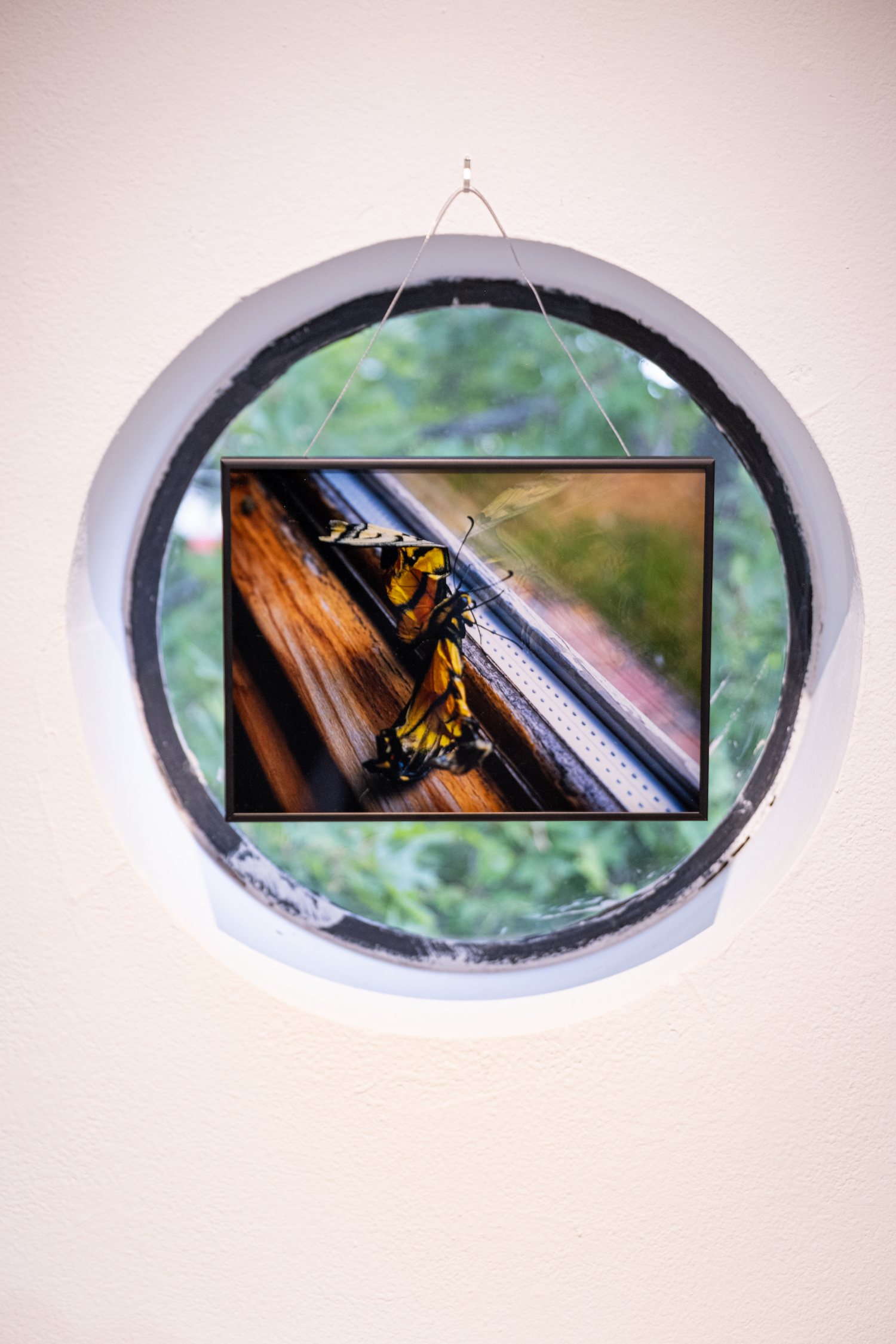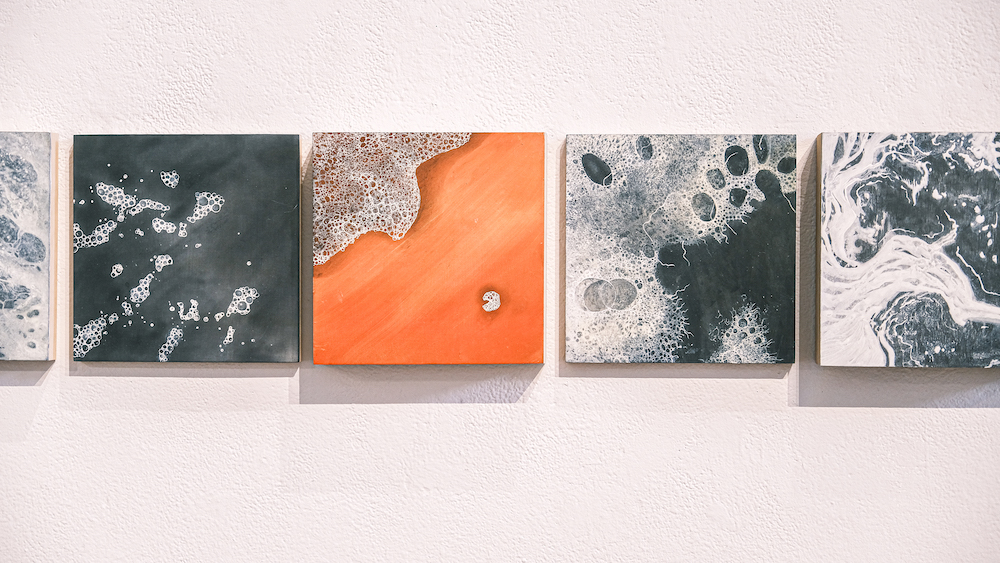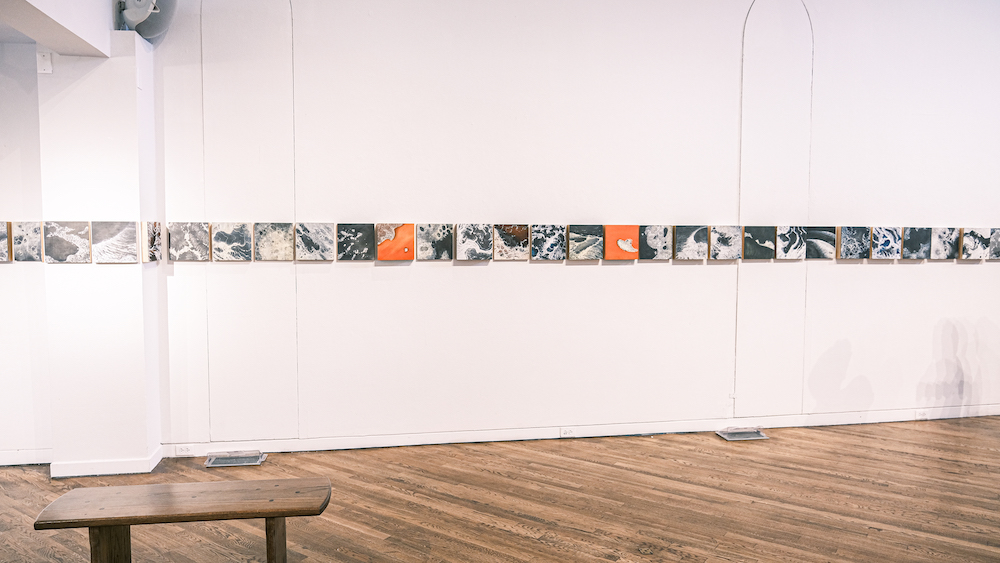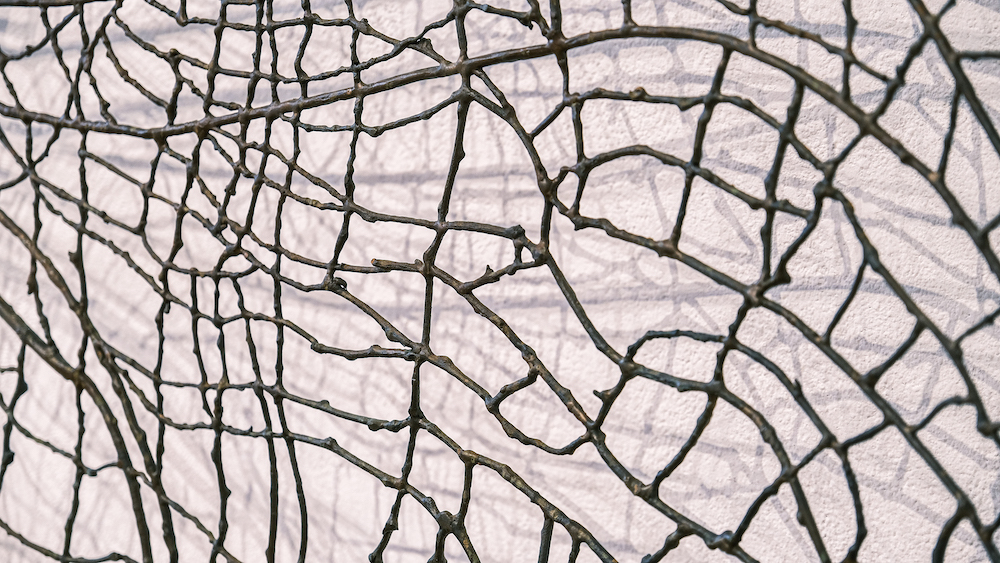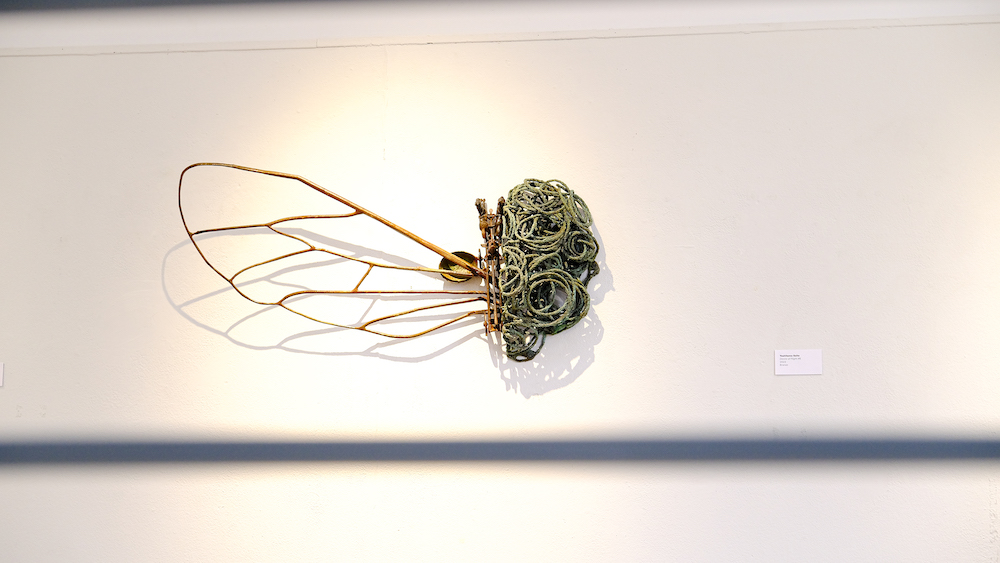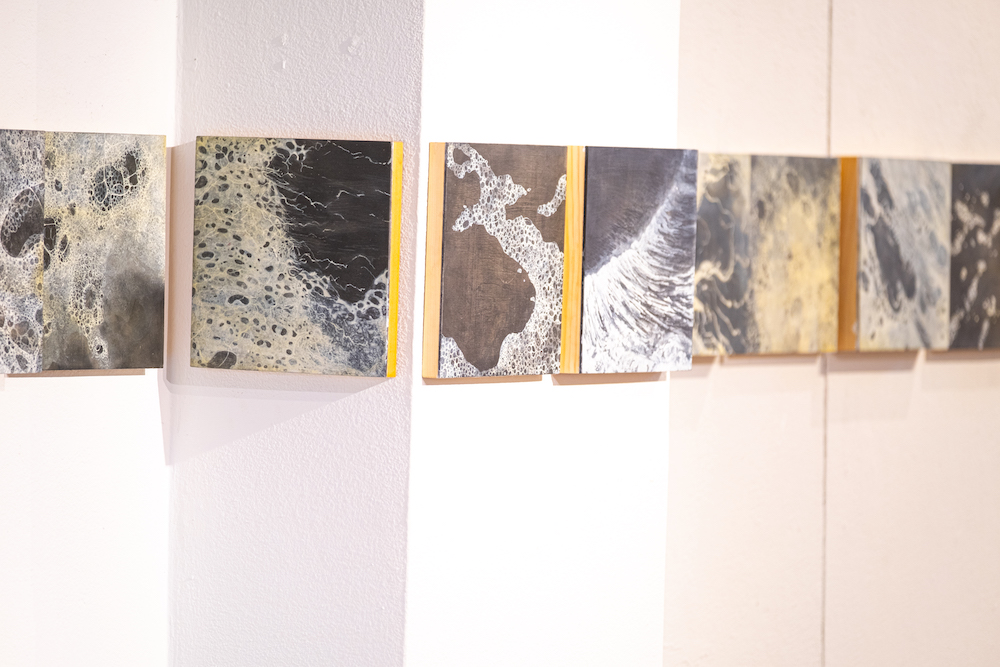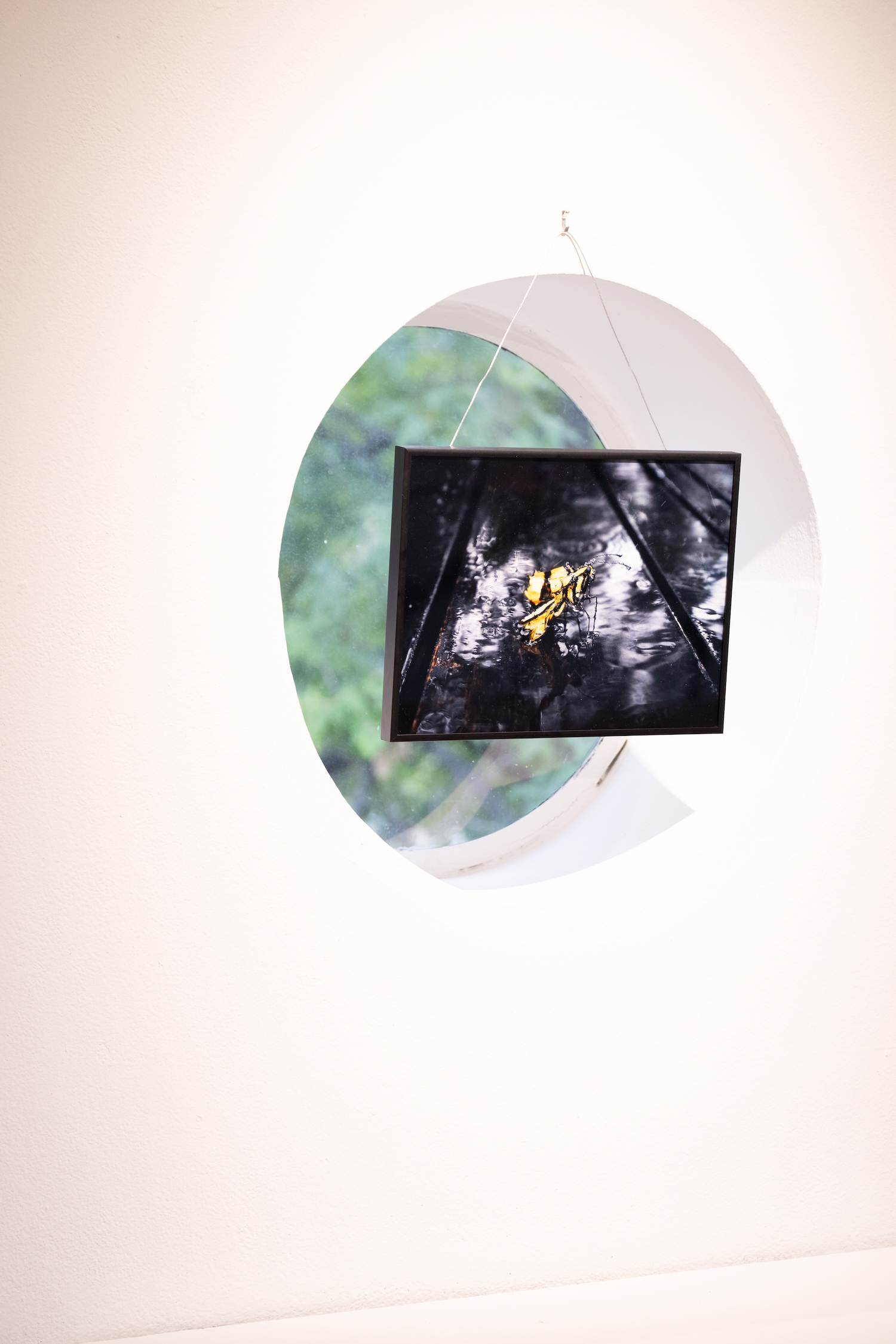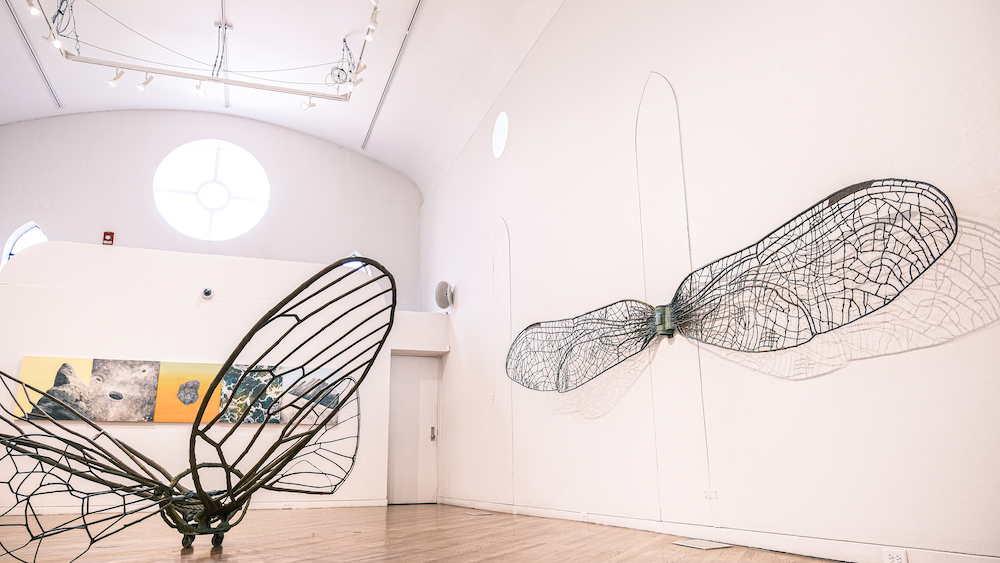Reframing the Landscape Exhibition Examines Beauty and Terror in Nature
The work of artists Lanny DeVuono and Yoshitomo Saito merge to create an exhibition that complements and contrasts.
The Emmanuel Art Gallery’s newest exhibition features the work of two well-known artists in the Denver art scene. Reframing the Landscape places the work of artists Lanny DeVuono and Yoshitomo Saito side by side. The free exhibition opens August 21, 2023; the public is welcome to experience the exhibition through October 7th as well as join the artists for a reception and Q&A on September 7th starting at 4pm.
Reframing the Landscape represents a return to the Auraria campus and CU Denver for DeVuono, who taught in the College of Arts & Media (CAM) for nine years in the Visual Arts department. Considering the Emmanuel Art Gallery represents the fulfillment of “such a long-term goal” for CU Denver of having its own gallery, DeVuono is “delighted” to return to the Auraria campus and display her work here. The exhibition is also a sort of return for Saito, who experienced a serious back injury that left him temporarily unable to work about a year and half ago. Reframing the Landscape is Saito’s first exhibition in Colorado since recovering from the injury.
Micro: Lanny DeVuono Makes the Ineffable Manageable
DeVuono’s 10-inch by 10-inch paintings are abstract and restrained on the walls of the gallery. That is until you take in all 50 of them collectively, the effective of which creates a massive seascape. The subjects of the carefully painted images are primarily from the Oregon and California coasts. In her exploration to imagine what interstellar landscapes look like, they are inspired by the world she knows, natural phenomena and monuments here on earth. The imagery is jumbled together so you don’t which image belongs to which realm. Just as your eyes settle into the simplicity and compactness of a single image, it hits you. There is something unknown—potentially sinister—about the dark spaces in the images. DeVuono is using landscape as a metaphor. Her work explores man’s desire to “own or possess the ineffable,” as she explains.
Included in this exhibition is a series of paintings DeVuono created from 2013-2020, titled Outer Space, Terraforming, and Searching for Water on Mars. The images “imagine extraterrestrial exploration as promised by groups from Virgin Galactic to XCOR Aerospace to Mars One” even while they harken to the “fanciful” images of the Americas made by 16th century Europeans, she explains. Commenting on the nature of modern space exploration, DeVuono says the images are “loaded with localized desires, concerns and projections.”
Water is a subject that has occupied DeVuono for quite a while. The artist finds it ironic that instead of concentrating our efforts on conserving water here on earth, we are searching for more of it beyond our gravitational borders. There is an element of being witness to agnotology in her work, DeVuono confides. Agnotology is a term coined by science historian Robert Proctor and is defined as the study of deliberate propagation of ignorance. The imaginations of water on Mars are juxtaposed with the images of life on earth—life that is changing and being threatened by a changing climate. DeVuono’s work points out that we are deliberately putting our heads in the clouds as we search for more of the very thing we have yet to learn how to use responsibly.
(1/11)
(2/11)
(3/11)
(4/11)
(5/11)
(6/11)
(7/11)
(8/11)
(9/11)
(10/11)
(11/11)
Macro: Yoshitomo Saito Makes the Minuscule Overwhelming
Upon entering the gallery, the gaze immediately falls on one of Saito’s bronze sculptures. Massive wings are held just slightly above the floor by an insect’s body. Part bee and part cicada, the piece is called “Drone” and evokes not only the insect reference to that word but also the modern man-made invention.
Saito’s work takes creatures and living things we are accustomed to seeing in nature and reinvents them—changing not only their size but their composition, their color, texture, and density. His work asks the viewer to reconsider the actual thing when encountering it in nature.
The artist experienced a back injury in December 2021 that took months to recover from and left him with limited mobility. Despite his gratitude for being on his feet again and the friends who helped him through a difficult time, the experience impacted his work. A piece called Desire of Flight #5 features another larger-than-life insect with a wing held up by a crutch. Saito says he was inspired to make the artwork after seeing a picture of a Paralympian in a wheelchair. The idea of overcoming a disability to that extent spoke to Saito. “There is an element of confronting and overcoming adversity,” says Andrew Palamara, Gallery Coordinator at CU Denver, not just in this piece but in others as well.
During the pandemic, Saito found it virtually impossible to go to his studio to create these larger-than-life bronze sculptures. While the world shut down, he found himself walking around a body of water near his home in Lakewood. Using the stimulus check many Americans received from the government, Saito purchased a Fujifilm X100V with special features for black and white photography. He started taking pictures of the surface of the water every day for several days on end. Choosing not to manipulate the pictures with his computer, Saito pushed his creativity and intuition to create different effects using the camera. The resulting 100 images evolved into a work called “Project Vibraciones” and is displayed in a looping video, projected on a wall in the Emmanuel Gallery. “In the end, I realized that my project was not about the beauty of water itself, but about the reflection of my own psyche in the images,” writes Saito. The fear and uncertainty that was ubiquitous during the pandemic is reflected to the viewer as they stand and observe the images.
The Beauty and Terror of Nature
At first glance, the work of DeVuono and Saito may seem to contrast one another, but the more time you spend in their shared space you appreciate their mutual themes. In both DeVuono’s and Saito’s work, the element of fear—of the unknown or unexplored—is on display. “The exhibition has a meditative quality to it,” says Gallery Director Jeff Lambson. “There is a duality between the different perspectives their art offers on our place in the profound but overwhelming landscape. DeVuono’s paintings take something massive and immeasurable such as the sea of another planet, and makes it comprehensible in distinct paintings. Saito takes the opposite challenge of discovering something tiny and delicate, such as a dragonfly wing, and sculpting it as a massive but intricate monolith. They both make terrifying but inspiring monuments that challenge our place in the landscape.”
The pieces ask the viewer to stay a minute and contemplate the state of the world we live in, and in so doing also invite a look inside to one’s internal state. What we find there may both terrify and inspire, just as the artwork does.
Reframing the Landscape Details
Reframing the Landscape is on display in the Emmanuel Gallery (located on the Auraria Campus) August 21-October 7, 2023. An opening reception is scheduled for September 7, 2023 from 4-7pm and is free and open to the public. The artists will be in attendance and available for a question-and-answer time starting at 4pm.
Emmanuel Gallery
1205 10th St Plaza
Denver, CO 80204
This exhibition is generously sponsored by CU Denver’s College of Arts & Media, with additional support from Michael Warren Contemporary and Jason Mehl Art.
Article by Megan Briggs-Pintel

